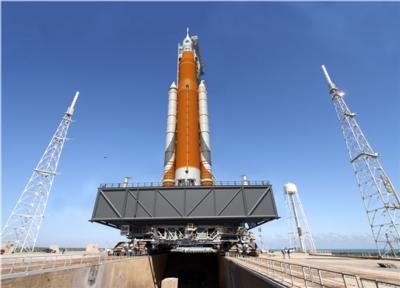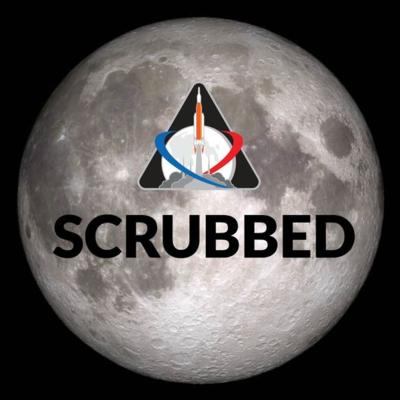SLS Malfunctions Tedious but Surmountable
NASA’s Artemis Program is off to an inauspicious start. Two scrubbed launches in one week have left space agency engineers and technicians scratching their heads, and a worldwide multitude of space enthusiasts acutely underwhelmed.

At apparent fault is the massive and persistently immobile Space Launch System (SLS), a super heavy-lift expendable launch vehicle under development by NASA, Lockheed Martin, and Boeing since 2011. If Artemis is the goddess of the hunt, SLS is the vehicle by which the huntress proceeds afield, that she might get about the business of pursuing her quarry—in this instance, a yet-to-be-determined landing site near the lunar south pole. Notwithstanding a Congressionally mandated 2016 inaugural launch, the SLS has yet to move under its own power.
The scrubbing of Artemis I’s original 29 August and back-up 03 September launches have been respectively attributed to problems with the SLS’s engine and fuel systems.
Of the first failed liftoff attempt, Artemis mission manager Mike Sarafin stated: "We were unable to get the engines within the thermal conditions required to commit to launch. In combination with that, we also had a bent valve issue on the core stage, and it was at that point that the team decided to knock off the launch attempt for that day."
The follow-up launch was precluded by a hydrogen-fuel-leak more severe than that observed on 29 August. Following its discovery, technicians endeavored to stem the leak by cycling a series of valves and warming various conduits and manifolds—albeit unsuccessfully. Undaunted, NASA directed technicians to flush the SLS fuel system with helium. The leak, however, persisted.
Comparing the 29 August and 03 September leaks, Mr. Sarafin opined: “We did see a small [29 August] leak, but we did not see one of this [03 September] magnitude. This [03 September] was not a manageable leak."

Ergo, at approximately 11:17 EDT, launch director Charlie Blackwell-Thompson made the decision to scrub the 03 September launch.
In a subsequent statement, NASA headquarters associate administrator Jim Free advised the public and press to expect no further liftoff attempts within the launch period culminating Tuesday 06 September. Mr. Free further stated that Artemis’s next launch period would likely fall in the latter part of October 2022.
Owing to the duration of expected inactivity, Mr. Sarafin implied the SLS will likely be rolled from the launch-pad and returned to the Vehicle Assembly Building.
"As part of this initial test flight, we're learning the vehicle. We're learning how to operate the vehicle, and we're learning all of the things required to get us to fly," Sarafin asserted. "We are still learning as we go to get this vehicle off safely, so our focus is on understanding the problem and developing solutions in terms of schedule, but also risk impacts."
NASA Administrator Bill Nelson praised the Artemis mission managers for making the tough calls, articulately remarking: “I’m very proud of the launch team. They do it right. They do it by the book. They do it very professionally. That’s why we have had this extraordinary success that we’ve had over the years. Sometimes we make mistakes but we try to minimize those because these are human being lives on the top of that rocket and I can tell you when you strap into that rocket, you are very grateful that you’ve got a launch team like this—that knows what they’re doing and they’re not going to let you go until it’s time.”
 ALTO NG Sees Increased Payload
ALTO NG Sees Increased Payload Airborne 05.30.24: High Time B29 Pilot, KLAL Teams With ACE, CHOPPER COPS
Airborne 05.30.24: High Time B29 Pilot, KLAL Teams With ACE, CHOPPER COPS Classic Aero-TV: Ralph Maloof Revs Up - Innovations For Homebuilt A/C Engines
Classic Aero-TV: Ralph Maloof Revs Up - Innovations For Homebuilt A/C Engines NTSB Final Report: Powrachute Pegasus
NTSB Final Report: Powrachute Pegasus Mesa Invests in TriFan 600
Mesa Invests in TriFan 600




